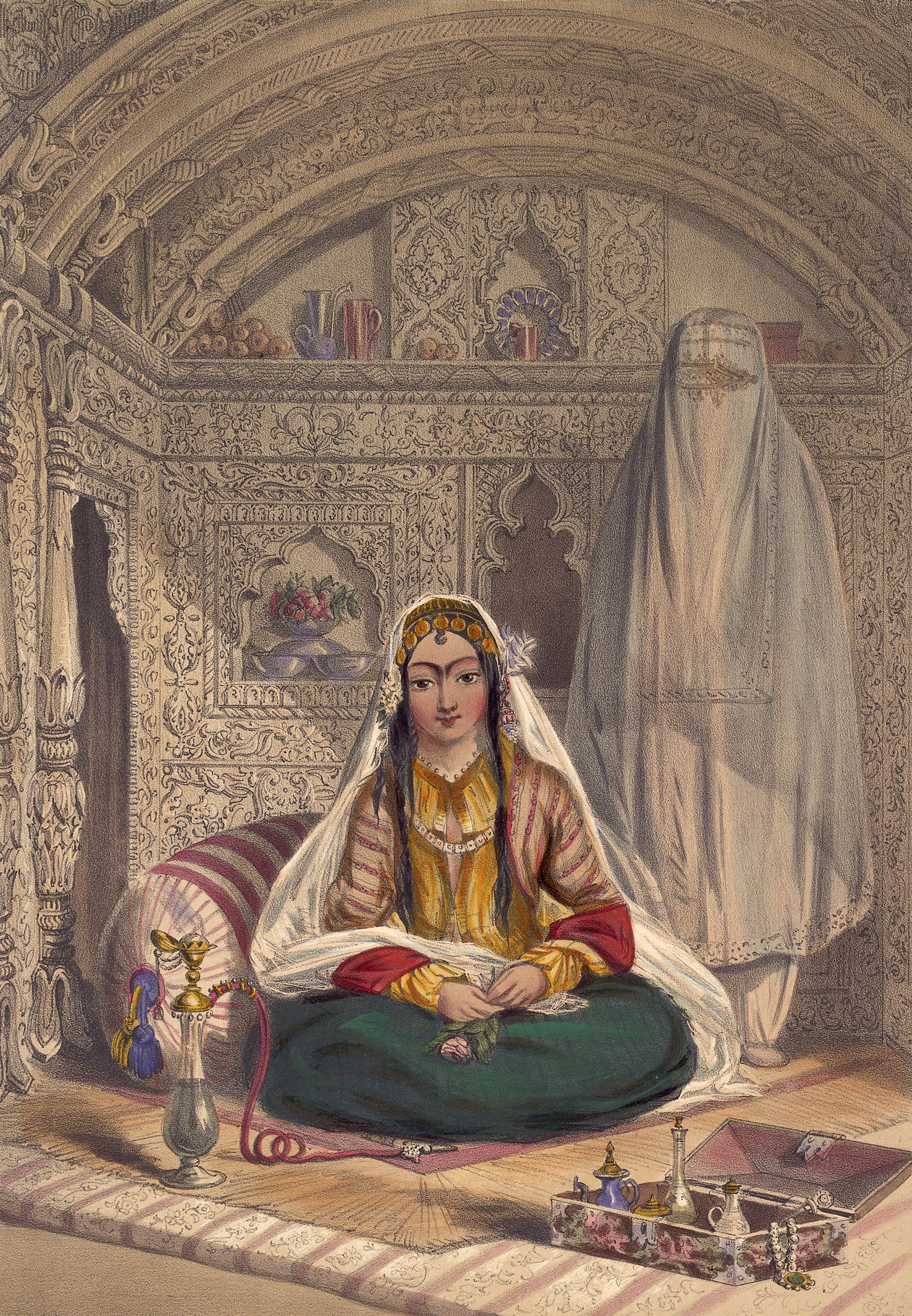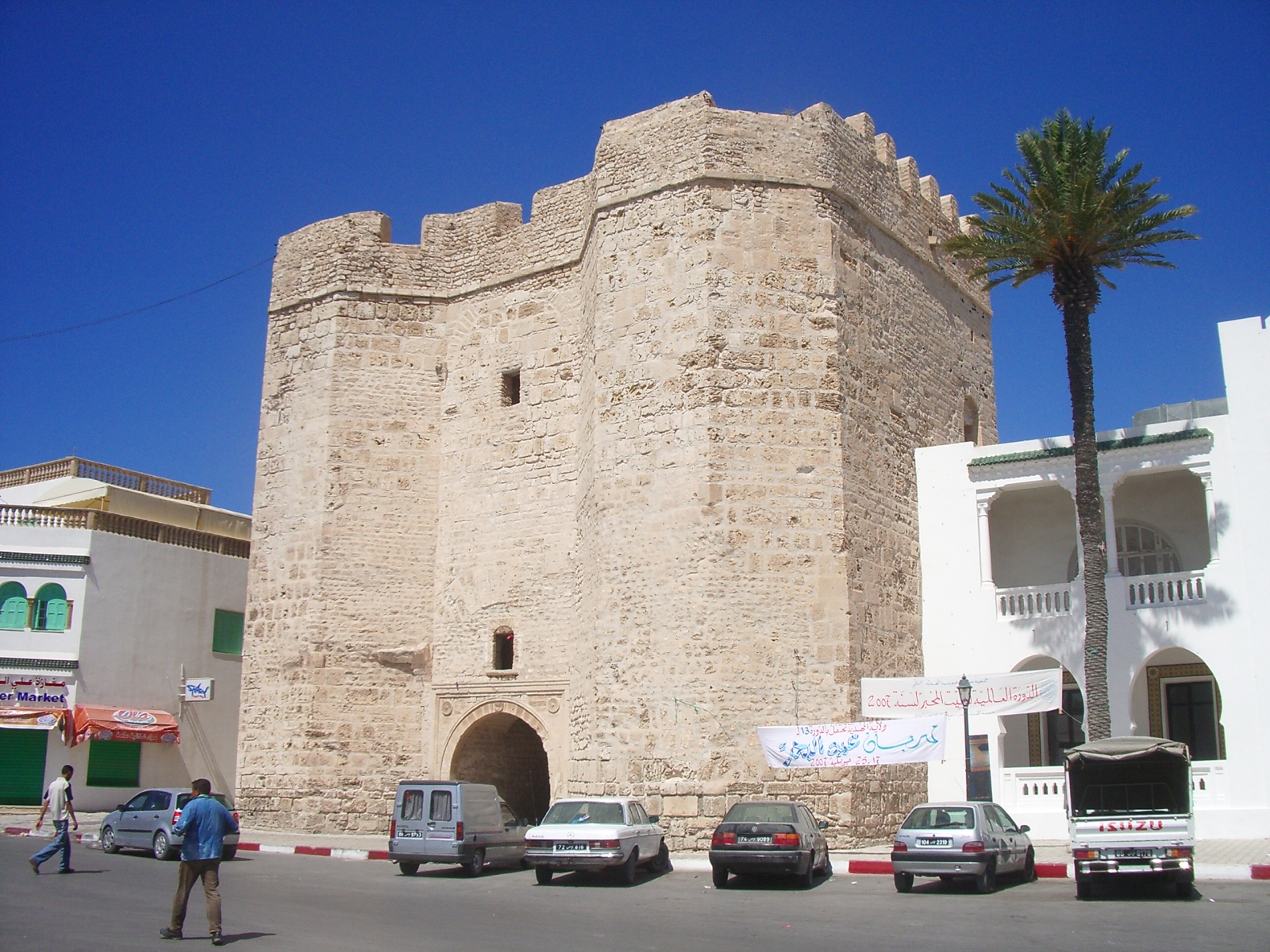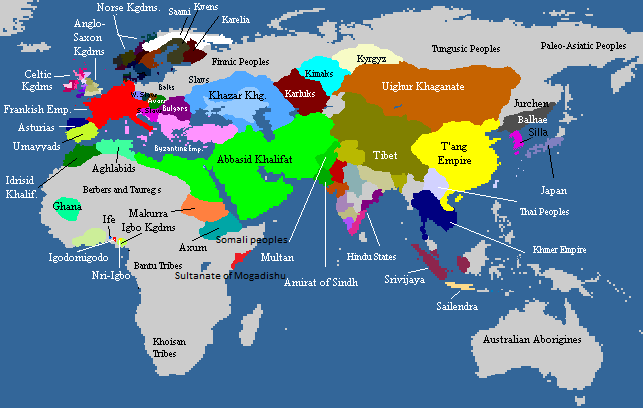|
Fatimid Harem
The Fatimid harem refers to the harem belonging to the rulers of the Fatimid dynasty during the Fatimid Caliphate of Egypt (909–1171). The harem was the quarters of the royal court in which the female members of the court, including the female relatives, wives, concubines (sex slaves) and female servants lived in seclusion under sex segregation. This was common for all Muslim royal courts, with some variation in how the harem was organized. Hierarchy and organization The Fatimid harem (909–1171) built upon the established model of the Abbasid harem. Female relatives The highest ranked woman in the Fatimid harem was normally the mother of the Caliph, or alternatively the mother of the heir or a female relative, who was given the title ''sayyida'' or ''al-sayyida al-malika'' ("queen"). There was a general dislike of Fatimid princesses marrying outside of the family, since their marriage was seen as a potential political security risk, and it appears they either remained unma ... [...More Info...] [...Related Items...] OR: [Wikipedia] [Google] [Baidu] |
Harem
A harem is a domestic space that is reserved for the women of the house in a Muslim family. A harem may house a man's wife or wives, their pre-pubescent male children, unmarried daughters, female domestic Domestic worker, servants, and other unmarried female relatives. In the past, during the history of slavery in the Muslim world, era of slavery in the Muslim world, harems also housed enslaved Concubinage in Islam, concubines. In former times, some harems were guarded by eunuchs who were allowed inside. The structure of the harem and the extent of monogamy or polygyny have varied depending on the family's personalities, socio-economic status, and local customs. Similar institutions have been common in other Mediterranean Basin, Mediterranean and Middle Eastern civilizations, especially among royal and upper-class families, and the term is sometimes used in other contexts. In traditional Persian residential architecture, the women's quarters were known as (), and in the Indian s ... [...More Info...] [...Related Items...] OR: [Wikipedia] [Google] [Baidu] |
Fatimid Dynasty
The Fatimid dynasty () was an Arab dynasty that ruled the Fatimid Caliphate, between 909 and 1171 CE. Descended from Fatima and Ali, and adhering to Isma'ili Shi'ism, they held the Isma'ili imamate, and were regarded as the rightful leaders of the Muslim community. The line of Nizari Isma'ili imams, represented today by the Aga Khans, claims descent from a branch of the Fatimids. The Alavi Bohras, predominantly based in Vadodara, also claim descent from the Fatimids. The Fatimid dynasty emerged as the leaders of the clandestine early Isma'ili missionary movement () in the ninth century CE, ostensibly acting on behalf of a hidden imam, implied at the time to be Muhammad ibn Isma'il. The Isma'ili spread widely across the Islamic world, then ruled by the Abbasid Caliphate. In 899, the future first Fatimid caliph, Abdallah, proclaimed himself to be the expected imam, causing a rift in the Isma'ili as the Qarmatians, who did not recognize his imamate, split off. In the meanti ... [...More Info...] [...Related Items...] OR: [Wikipedia] [Google] [Baidu] |
Fatimid Caliphate
The Fatimid Caliphate (; ), also known as the Fatimid Empire, was a caliphate extant from the tenth to the twelfth centuries CE under the rule of the Fatimids, an Isma'ili Shi'a dynasty. Spanning a large area of North Africa and West Asia, it ranged from the western Mediterranean in the west to the Red Sea in the east. The Fatimids traced their ancestry to the Islamic prophet Muhammad's daughter Fatima and her husband Ali, the first Shi'a imam. The Fatimids were acknowledged as the rightful imams by different Isma'ili communities as well as by denominations in many other Muslim lands and adjacent regions. Originating during the Abbasid Caliphate, the Fatimids initially conquered Ifriqiya (roughly present-day Tunisia and north-eastern Algeria). They extended their rule across the Mediterranean coast and ultimately made Egypt the center of the caliphate. At its height, the caliphate included—in addition to Egypt—varying areas of the Maghreb, Sicily, the Levant, and the Hej ... [...More Info...] [...Related Items...] OR: [Wikipedia] [Google] [Baidu] |
Concubinage In Islam
In classical Islamic law, a concubine was an unmarried slave-woman with whom her master engaged in sexual relations. Concubinage was widely accepted by Muslim scholars until the abolition of slavery in the 20th-century. Most modern Muslims, both scholars and laypersons, believe that Islam no longer permits concubinage and that sexual relations are religiously permissible only within marriage. Concubinage was a custom practiced in both pre-Islamic Arabia and the wider Near East and Mediterranean. The Quran allowed this custom by requiring a man not to have sexual relations with anyone except for his wife or concubine . Muhammad had a concubine Maria the Copt who had been given to him as a gift by al-Muqawqis with whom he had a son. Some sources say he later freed and married her, while others dispute this. Classical Islamic jurists did not place any limits on how many concubines a man could have. Prostitution of concubines was prohibited. A concubine who gave birth to a child ac ... [...More Info...] [...Related Items...] OR: [Wikipedia] [Google] [Baidu] |
Sex Segregation
Sex segregation, sex separation, sex partition, gender segregation, gender separation, or gender partition is the physical, legal, or cultural separation of people according to their gender or Sex, biological sex at any age. Sex segregation can simply refer to the physical and spatial separation by sex without any connotation of illegal sexism, discrimination. In other circumstances, sex segregation can be controversial. Depending on the circumstances, it can be a violation of capabilities and human rights and can create economic inefficiencies; on the other hand, some supporters argue that it is central to certain religious laws and social and cultural histories and traditions.The World Bank. 2012. "Gender Equality and Development: World Development Report 2012." Washington, D.C.: The World Bank. Sex segregation is a global phenomenon manifested differently in varying localities. Sex segregation and integration considered harmless or normal in one country can be considered rad ... [...More Info...] [...Related Items...] OR: [Wikipedia] [Google] [Baidu] |
Abbasid Harem
The harem of the caliphs of the Abbasid Caliphate (750–1258) in Baghdad was composed of their mothers, wives, slave concubines, female relatives and slave servants (women and eunuchs), occupying a secluded portion of the Abbasid household. This institution played an important social function within the Abbasid court and was that part were the women were confined and secluded. The senior woman in rank in the harem was the mother of the Abbasid caliph, Caliph. The Abbasid harem acted as a role model for the harems of other Islamic dynasties, as it was during the Abbasid Caliphate that the harem system was fully enforced in the Muslim world. Background and origin The harem system first became fully institutionalized in the Islamic world under the Abbasid caliphate. Although the term ''harem'' does not denote women's quarters in the Quran, a number of Quranic verses discussing modesty and seclusion were held up by Quranic commentators as religious rationale for the s ... [...More Info...] [...Related Items...] OR: [Wikipedia] [Google] [Baidu] |
Abd Allah Al-Mahdi Billah
Abū Muḥammad ʿAbd Allāh ibn al-Ḥusayn (; 31 July 874 – 4 March 934), better known by his regnal name al-Mahdī biʾllāh (, "The Rightly Guided by God"), was the founder of the Isma'ili Fatimid Caliphate, the only major Shi'a caliphate in Islamic history, and the eleventh Imam of the Isma'ili branch of Shi'ism. He was born as Saʿīd ibn al-Ḥusayn () in Askar Mukram to a family that led the secret Isma'ili missionary network (), propagating on behalf of the hidden imam, Muhammad ibn Isma'il, who would return as the prophesied Islamic messiah (). Orphaned at a young age, he moved to Salamiya, the family's base of operations, where he was adopted by his uncle. In the mid-890s Sa'id succeeded to the leadership of the expanding , which had expanded and gained adherents across the then Muslim world. However, his claims of not merely being a trustee of the hidden imam, but of him and his ancestors holding the imamate itself, led in 899 to a schism in the Isma'ili movement: t ... [...More Info...] [...Related Items...] OR: [Wikipedia] [Google] [Baidu] |
Aghlabid Dynasty
The Aghlabid dynasty () was an Arab dynasty centered in Ifriqiya (roughly present-day Tunisia) from 800 to 909 that conquered parts of Sicily, Southern Italy, and possibly Sardinia, nominally as vassals of the Abbasid Caliphate. The Aghlabids were from the tribe of Banu Tamim and adhered to the Mu'tazilite rationalist doctrine within Hanafi Sunni Islam, which they imposed as the state doctrine of Ifriqiya. They ruled until 909 when they were conquered by the new power of the Fatimids. History Independence and consolidation In 800, the Abbasid Caliph Harun al-Rashid appointed Ibrahim I ibn al-Aghlab, son of a Khurasanian Arab commander from the Banu Tamim tribe, as hereditary Emir of Ifriqiya, in response to the anarchy that had reigned in that province following the fall of the Muhallabids. At that time there were perhaps 100,000 Arabs living in Ifriqiya, although the Berbers still constituted the great majority. Most of the Arab immigrants had come from Syria and Ira ... [...More Info...] [...Related Items...] OR: [Wikipedia] [Google] [Baidu] |
Al-Hafiz
Abūʾl-Maymūn ʿAbd al-Majīd ibn Muḥammad ibn al-Mustanṣir, better known by his regnal name as al-Ḥāfiẓ li-Dīn Allāh (), was the eleventh Fatimid caliph, ruling over Egypt from 1132 to his death in 1149, and the 21st imam of Hafizi Isma'ilism. Al-Hafiz first rose to power as regent after the death of his cousin, al-Amir bi-Ahkam Allah, in October 1130. Al-Amir had only left an infant son, al-Tayyib, as a possible successor, so al-Hafiz—as the oldest surviving member of the dynasty—became regent. Al-Tayyib was apparently sidelined and possibly killed by the new regime, which was in turn overthrown within a few days by the army under Kutayfat. The latter imprisoned al-Hafiz, and moved to depose the Fatimids and replace Isma'ilism with a personal regime, possibly based on Twelver Shi'ism, with himself as the Hidden Imam's all-powerful vicegerent. Kutayfat's regime was toppled when he was murdered by Fatimid loyalists in December 1131, and al-Hafiz was freed a ... [...More Info...] [...Related Items...] OR: [Wikipedia] [Google] [Baidu] |
Eunuch
A eunuch ( , ) is a male who has been castration, castrated. Throughout history, castration often served a specific social function. The earliest records for intentional castration to produce eunuchs are from the Sumerian city of Lagash in the 2nd millennium BCE. Over the millennia since, they have performed a wide variety of functions in many different cultures: courtiers or equivalent Domestic worker, domestics, for espionage or clandestine operations, ''castrato'' singers, Concubinage, concubines or sexual partners, religious specialists, soldiers, royal guards, government officials, and guardians of women or harem servants. Eunuchs would usually be servants or Slavery, slaves who had been castrated to make them less threatening servants of a royal court where physical access to the ruler could wield great influence. Seemingly lowly domestic functions—such as making the ruler's bed, bathing him, cutting his hair, carrying him in his litter (vehicle), litter, or even rel ... [...More Info...] [...Related Items...] OR: [Wikipedia] [Google] [Baidu] |
Muhammad Ali Dynasty Harem
The rulers of the Muhammad Ali dynasty kept a harem during the Khedivate of Egypt (1805–1914). The harem was the quarters of the royal court in which the female members of the court, including the female relatives, wives, concubines (sex slaves) and female servants lived in seclusion under sex segregation. This was common for all Muslim royal courts, with some variation in how the harem was organized. In the case of the Muhammad Ali dynasty, the harem was dissolved in the 1930s, when the women of the royal family left seclusion. History The royal harem during the Muhammad Ali dynasty of the Khedivate of Egypt (1805–1914) was modelled after Ottoman example, the khedives being the Egyptian viceroys of the Ottoman sultans. Muhammad Ali was appointed vice roy of Egypt in 1805, and by Imperial Ottoman example assembled a harem of slave concubines in the Palace Citadel of Cairo which, according to a traditional account, made his legal wife Amina Hanim declare herself to henc ... [...More Info...] [...Related Items...] OR: [Wikipedia] [Google] [Baidu] |
Slavery In The Fatimid Caliphate
Slavery in Egypt was practised until the early 20th century. It differed from slavery in ancient Egypt, being managed in accordance with Islamic law from the conquest of the Caliphate in the 7th century until the practice stopped in the early 20th century, having been gradually phased out when the slave trade was banned in the late 19th century. During the Islamic history of Egypt, slaves were mainly of three categories: male slaves used for soldiers and bureaucrats, female slaves used for sexual slavery as concubines, and female slaves and eunuchs used for domestic service in harems and private households. At the end of the period, there was a growing agricultural slavery. The people enslaved in Egypt during Islamic times mostly came from Europe and Caucasus (who were referred to as "white"), or from the Sudan and Africa South of the Sahara through the Trans-Saharan slave trade (who were referred to as "black"). British pressure led to the abolishment of the slave trade bet ... [...More Info...] [...Related Items...] OR: [Wikipedia] [Google] [Baidu] |










